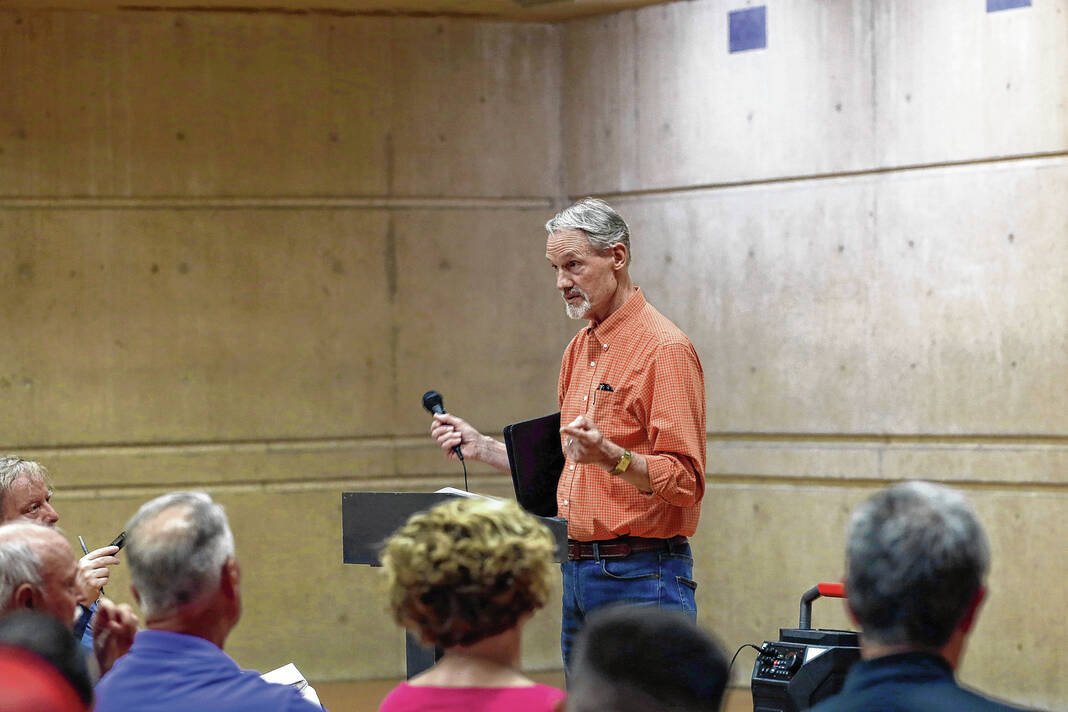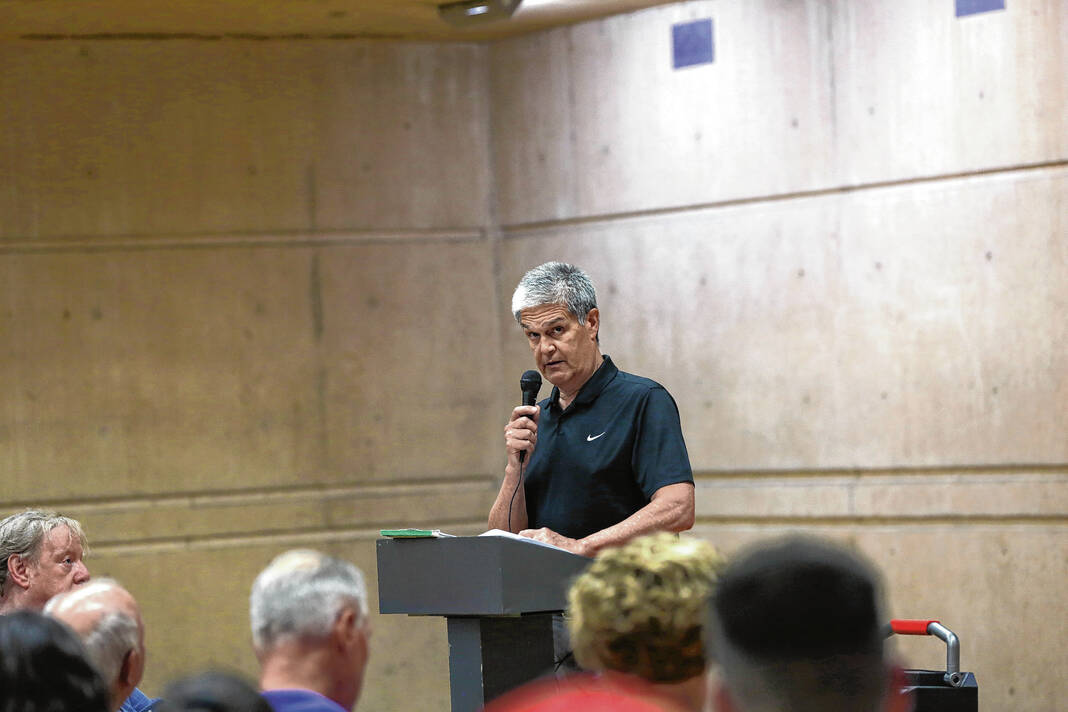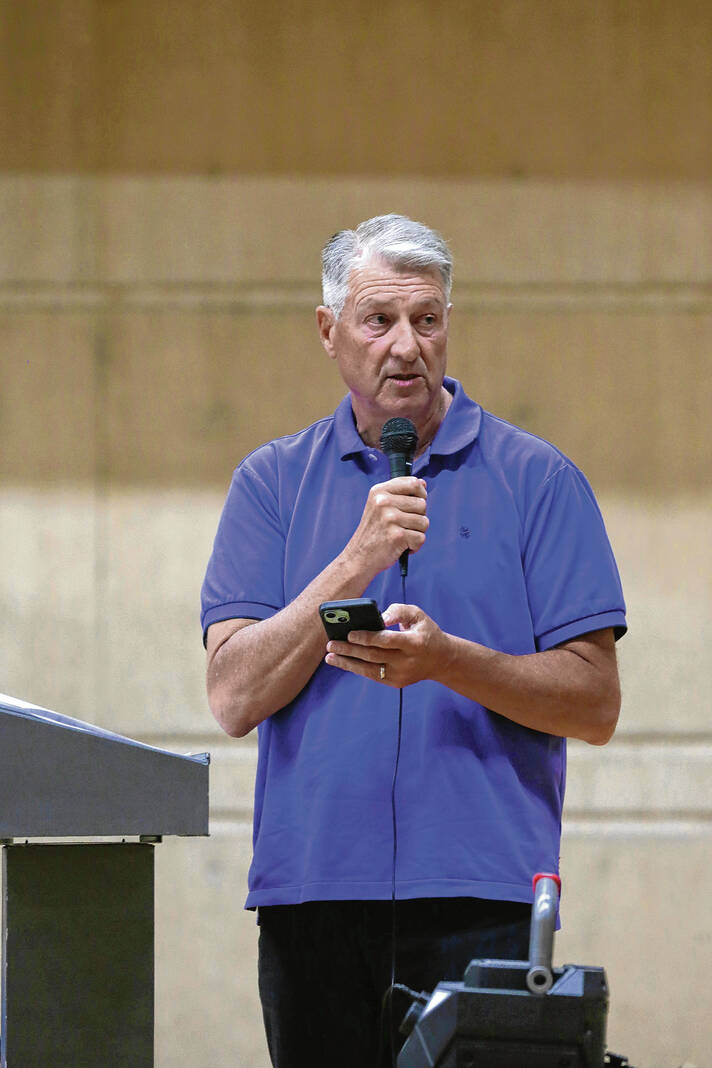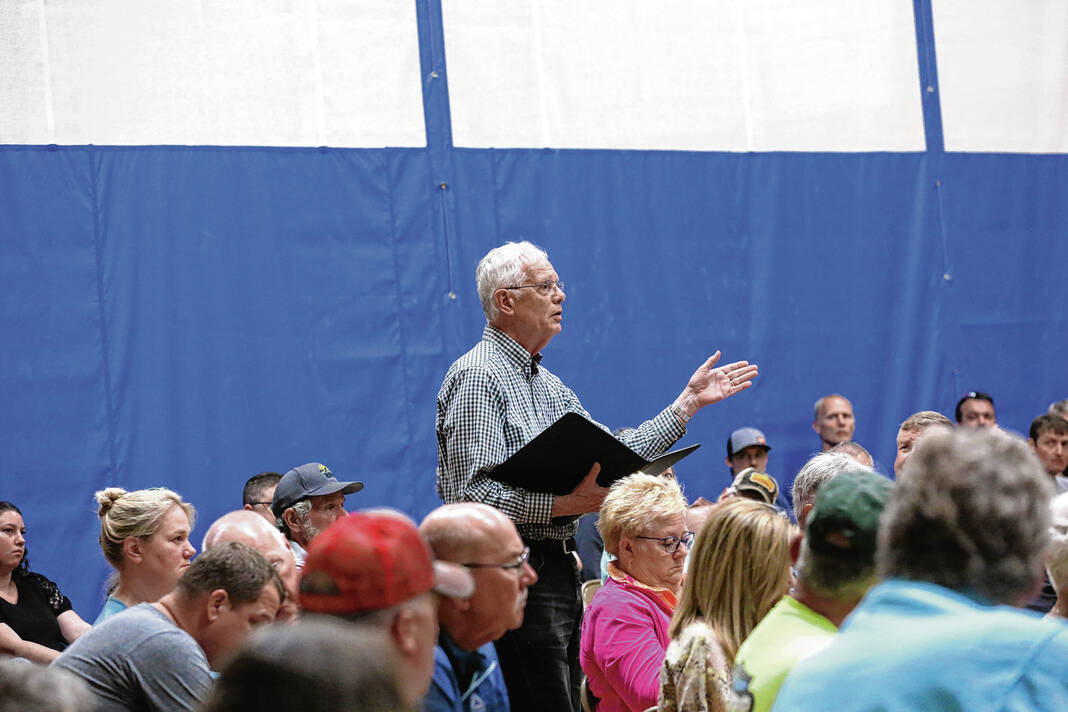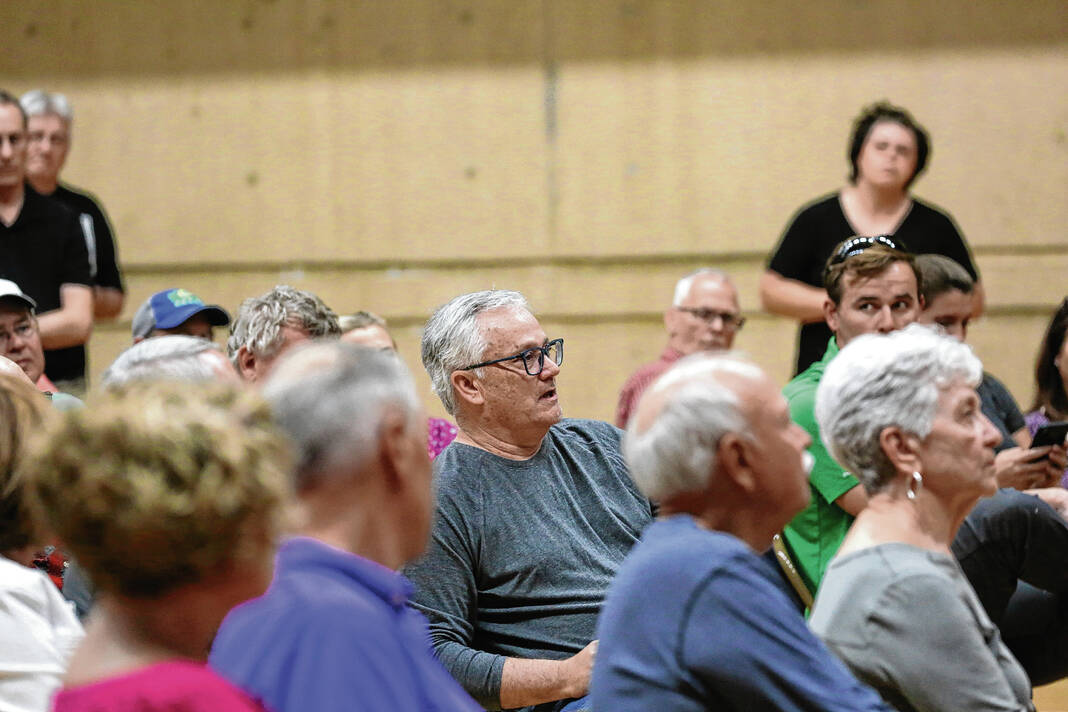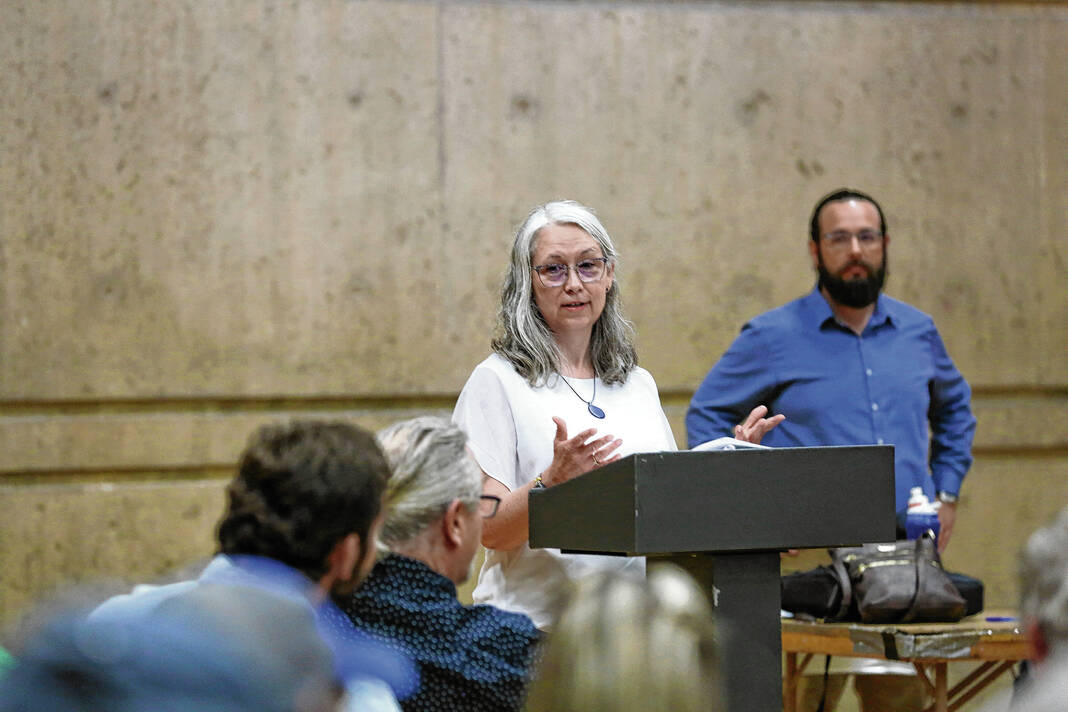
Carla Clark | For The Republic Bruce Hamilton speaks about the impact on water supplies during a public hearing to allow a biosolids storage facility in Bartholomew County held by the Indiana Department of Environmental Management (IDEM) at the Sports Center Building at CERAland Park, Columbus, Ind., Wednesday, April 17, 2024.
Carla Clark | For The Republic Bruce Hamilton speaks about the impact on water supplies during a public hearing to allow a biosolids storage facility in Bartholomew County held by the Indiana Department of Environmental Management (IDEM) at the Sports Center Building at CERAland Park, Columbus, Ind., Wednesday, April 17, 2024.
Of the approximately 110 individuals who attended Wednesday’s public hearing on a proposed sewage sludge-holding facility, nobody spoke in favor of it. The vast majority of the 80 written comments received prior to the hearing were also negative.
The Indiana Department of Environmental Management conducted a public hearing at CERAland Park Wednesday night as it considers a request from Evan Daily of Biocycle LLC to accept dewatered biosolids for blending and use on farmland in Bartholomew and several neighboring counties. Biosolids are organic materials produced during the treatment of human sewage at wastewater treatment plants.
IDEM officials said a decision on the Biocycle LLC permit would come by June 1, at the earliest.
The proposed site for a storage facility is southeast of Columbus at 3788 E. County Road 300S.
During the IDEM hearing, audience members expressed their dissatisfaction after land application specialist Brenda Stephanoff said Biocycle will perform its own testing to prevent possible adverse environmental effects, rather than having testing by an outside entity such as the state. In addition, company personnel would also write a monthly report regarding their own testing.
“The honor system?” one audience member responded with a tone of disbelief. Another man yelled out that IDEM was “allowing the fox to guard the chicken coop.”
While many concerns were expressed, Stephanoff said the application can only be denied if it does not meet the criteria set forth in Article 6.1 of Indiana’s Water Pollution Control Division – or if Daily fails to provide information requested by IDEM.
That prompted an audience member to ask why the public meeting was being held if the criteria has already been established.
Indiana already has seven facilities like Biocycle that comply with all regulations, Stephanoff said. Hearing officer Thomas Kieke said he’s aware of only one instance where false information regarding a biosolids facility was submitted to his agency.
Perhaps the most significant comments made against Biocycle’s request came from Indianapolis attorney Arie Lipinski, who represented more than two-dozen audience members that call themselves the “Biosolids Concerned Citizens Group.”
The attorney cited a state regulation requiring an affidavit demonstrating at least one year of experience in land application, management practices and procedures. As an alternative, the operator could provide an affidavit that he or she has a certified wastewater treatment plant license.
But Lipinski says the Biocycle application doesn’t have personnel that meet either requirement.
While time limits prevented the Indianapolis attorney from addressing all of his allegations, Lipinski did contend that:
- Biocycle personnel are not sophisticated enough, nor have the proper equipment and technology, to follow management practices in accepting biosolids from municipalities.
- The applicants failed to provide a required narrative description that lists the type of wastewater treatment processes involved, as well as the type and volume of all storage units.
- The application doesn’t show Daily has equipment that would allow biosolids to flow from storage to sampling areas.
- Plans submitted to IDEM do not indicate any barriers that would prevent sludge runoff.
- The proposed 85-feet-wide by 100-feet-long holding area is insufficient for collecting a fixed volume of biosolids.
- Biocycle does not have a backup option for disposal of the sludge.
The attorney also said Daily did not get some required signatures and has not being transparent on the location of specific wells.
Lipinski told the IDEM representatives that samples for testing should be conducted by an independent environmental consultant.
“My clients can’t rely on the testing of pollutant limits performed by Biocycle employees,” Lipinski said. “It’s self-serving.”
Attendee Bruce Hamilton expressed concern about what harmful effects surface water contaminated with PFAS might have on well water.
Technically named per- and polyfluoroalkyl substances, PFAS have been used in a variety of consumer products since the 1940s. Recent research indicates these industrial chemicals don’t naturally break down, and may be associated with a variety of serious health conditions including cancer.
Hamilton said those with well water can’t wait until testing is completed and proposed EPA standards for drinking water, which were released last week, are implemented in 2029.
“Why don’t you wait until 2029, and if the people wanting to do this facility still want it, have them come back to us and we’ll consider it?” said property owner Colin Scheidt. That comment drew an enthusiastic round of applause from the audience.
Scheidt was also critical of the IDEM staff at the meeting for not bringing visual aids like maps for the reference of those in attendance.
Retired law enforcement officer Rob Kittle, who lives near the proposed Biocycle site, expressed concern that the slope of the land could cause contaminants to run off into rivers and streams. That led another person in attendance to request a maximum 12% slope restriction be maintained if the application is approved.
One of the final people to address the IDEM staff was long-time Realtor Tim Scheidt, who commended county officials for historically taking a careful and cautious approach to land-use change.
“They realize that land use change can affect values of properties anywhere,” Scheidt said. “This land use change belongs somewhere else.”

